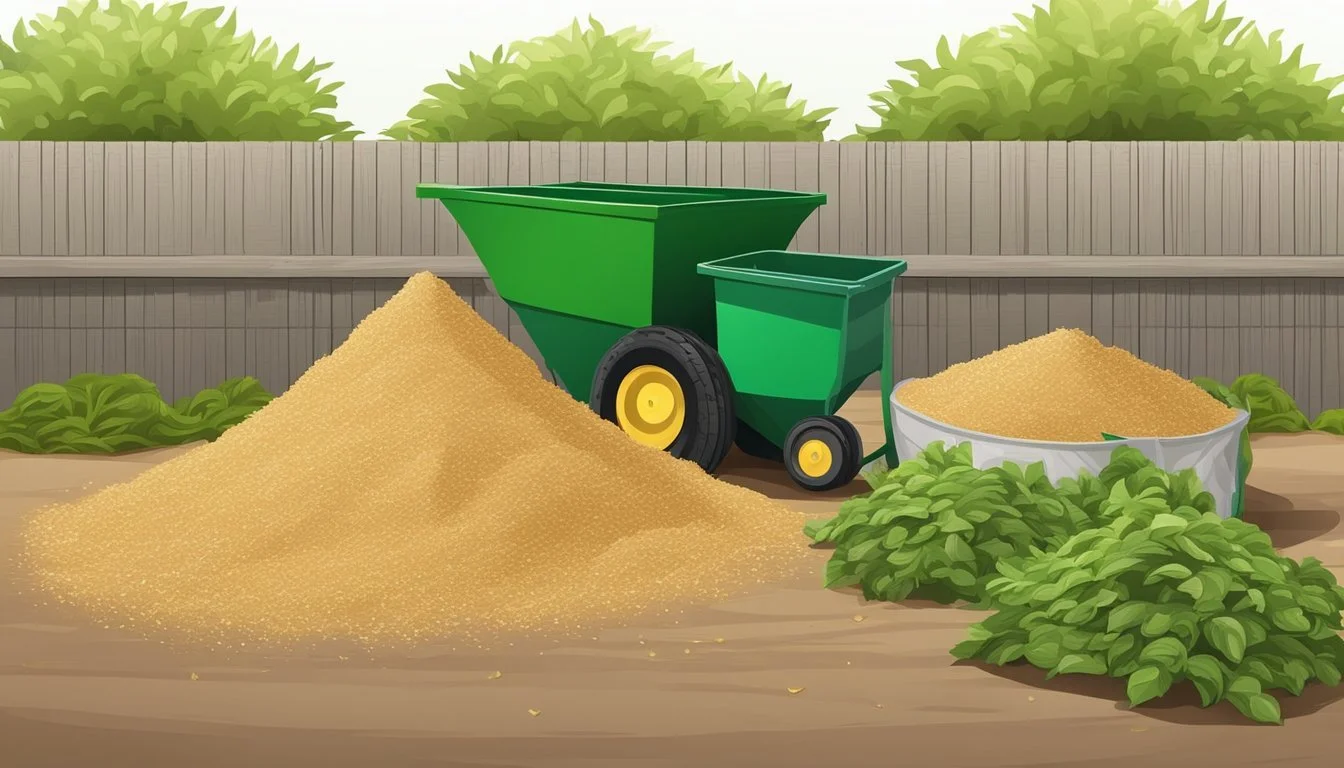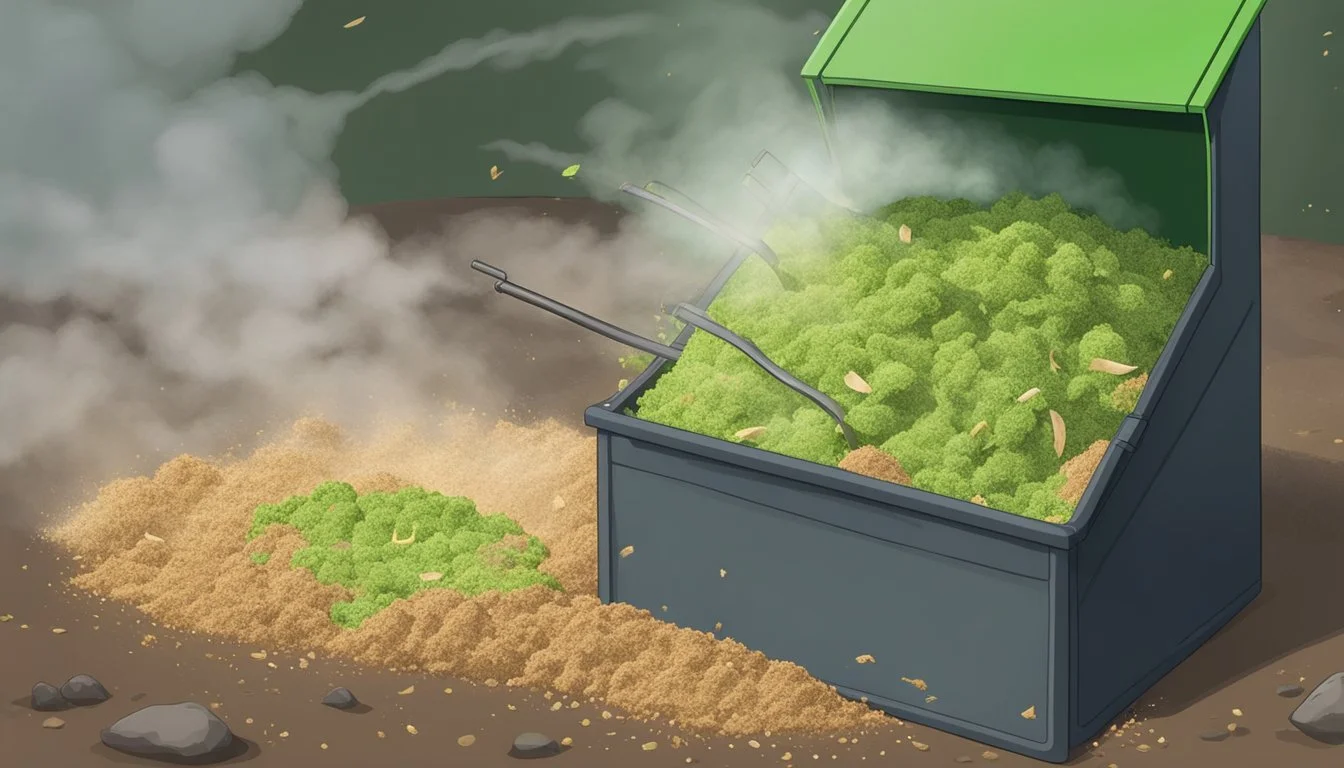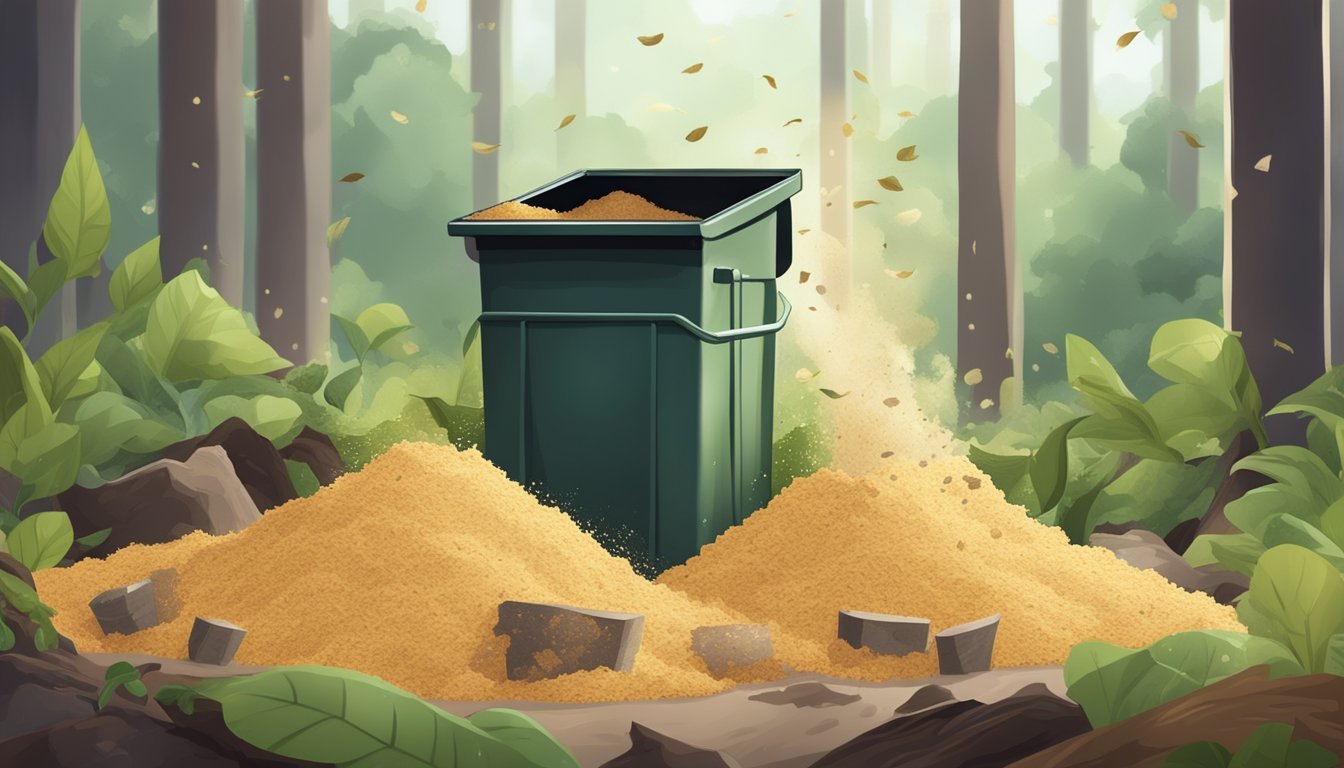Can You Compost Sawdust?
Understanding Its Role in Composting
Composting is a method of converting organic waste into nutrient-rich soil amendment through natural degradation processes. Sawdust, a common by-product of woodworking and lumber operations, is a viable ingredient for compost due to its high carbon content. Carbon acts as an energy source for the microbes that break down organic matter in a compost pile. As these microbes work, they convert materials like sawdust into a dark, crumbly substance that benefits soil health.
However, for effective composting, sawdust needs to be balanced with nitrogen-rich materials, often referred to as "greens". Materials such as grass clippings, fruit and vegetable scraps, or coffee grounds provide the necessary nitrogen for microbial activity. Without this balance, the high carbon content in sawdust can slow down the composting process, leading to a longer decomposition time.
Care should be taken to use untreated sawdust, as wood treated with chemicals can introduce harmful substances into the compost. This caution helps to ensure the resulting compost is safe for use in gardens and landscapes, contributing to a sustainable cycle of organic waste management.
Benefits of Composting Sawdust
Composting sawdust enriches soil health and sustainability by transforming waste into a valuable resource. It is particularly effective as a carbon-rich complement to nitrogenous organic materials in compost heaps.
Soil Amendment and Mulching
When added to compost, sawdust acts as a soil amendment by improving soil structure and aeration. In its decomposed form, it enhances soil's ability to retain moisture, benefiting plant root systems. Moreover, as a mulch, sawdust reduces surface evaporation, temperature fluctuations, and weed growth, thus serving as a protective layer for soil.
Waste Reduction and Environmental Benefits
The environmental impact of composting sawdust is two-fold. Not only does it divert wood byproducts from landfills, reducing potential leachate and methane emissions, but it also recycles this carbon-rich material into a productive medium. Through effective composting, sawdust contributes to a healthier environment by cycling organic materials back into the ecosystem.
Understanding Sawdust in Composting
In the process of composting, sawdust acts as a high-carbon addition, balancing the nutrient-rich 'green' materials. The inclusion of sawdust in compost requires careful consideration of its carbon-to-nitrogen ratio and the type of sawdust used.
Carbon-to-Nitrogen Ratio
The carbon-to-nitrogen (C) ratio is crucial for the effective composting of sawdust. Sawdust is predominantly carbon-rich material with a C ratio that can range from 325:1 to 500:1, depending on the wood type. To ensure efficient decomposition and to maintain a balanced composting environment, it is important to offset sawdust's high carbon content with nitrogen-rich 'green' materials, such as:
Grass clippings
Fruit and vegetable scraps
Coffee grounds
These green materials have a lower C ratio, typically around 20:1, which helps accelerate the breakdown of sawdust.
Types of Sawdust and Suitability
Not all sawdust is created equal, and its suitability for composting depends on the wood source and treatments. Untreated, natural wood sawdust is the most suitable for composting as it is free of harmful chemicals that could leach into the compost. Here is a quick reference for the types of sawdust and their suitability:
Type of Sawdust Suitability for Composting Untreated Wood Ideal and recommended Treated Wood Avoid due to potential toxins Plywood or Particleboard Avoid due to glues and chemicals
In composting, one should be wary of treated wood, which contains chemicals such as preservatives and may harm the microbiological activity within the compost pile. When choosing sawdust for composting, selecting from untreated woods is most conducive to creating a healthy, toxin-free compost.
Preparing Sawdust for Composting
In composting sawdust, managing moisture content and ensuring proper aeration are critical steps. Additionally, incorporating the right amount of nitrogen-rich materials will facilitate a balanced composting process for this high-carbon substrate.
Moisture and Aeration
Sawdust tends to be dry and can absorb a significant amount of moisture from the compost pile. The ideal moisture level for composting is similar to that of a wrung-out sponge, as excessive wetness can lead to a lack of oxygen and a slower decomposition process. To maintain proper moisture levels:
Routinely check the pile's moisture and add water if the sawdust appears excessively dry.
Turn the pile regularly to introduce air and prevent the sawdust from becoming compacted, which would impede airflow.
Mixing with Nitrogen-Rich Materials
Since sawdust is carbon-rich, it requires a balance of nitrogen to decompose effectively. Nitrogen-rich or "green" materials are a necessary addition to a sawdust composting setup. Suitable green materials include:
Vegetable scraps
Grass clippings
Fresh plant matter
The suggested ratio is approximately one part green materials to every 10 parts brown (or carbon-rich materials) by volume. This mix ensures a conducive environment for the microorganisms to thrive and break down the organic material into compost.
Composting Process and Techniques
In composting, balancing carbon and nitrogen is crucial, and sawdust contributes significantly as a carbon-rich material. Effective composting techniques ensure efficient decomposition, creating a nutrient-rich final product.
Layering and Maintaining the Pile
Composting requires alternating layers of carbon-rich and nitrogen-rich materials. For sawdust, which is high in carbon, it should be layered with nitrogen-rich materials like food scraps or grass clippings to speed up the decomposition process. A common ratio is 30:1, carbon to nitrogen. One should:
Add sawdust in thin layers to prevent clumping and to ensure that it's well-integrated with nitrogen-rich materials.
Maintain the pile by turning it regularly, which aerates the pile, supplying oxygen that bacteria need to break down the organic material.
Monitoring and Troubleshooting
A compost pile requires regular monitoring to ensure it's on the right track for successful decomposition. Signs that the composting process is working include:
The pile should be warm in the center, indicating that the bacteria are actively decomposing the material.
There should be no foul odors; a healthy compost pile smells like earth.
If the pile is too wet, sawdust can help absorb excess moisture. Conversely, if the pile is too dry, one can add water to maintain moisture levels conducive for bacterial activity. If the pile is cool and decomposition has slowed, adding more nitrogen-rich materials can reactivate the bacteria. Remember to avoid sawdust from treated wood as it can contain harmful chemicals that are not suitable for composting.
Potential Issues and Concerns
When composting sawdust, one needs to be aware of issues such as contamination and the introduction of pests or diseases that could potentially harm the composting process or the future application of the compost.
Chemical Contamination Risks
Chemically treated wood can inadvertently introduce harmful chemicals into compost piles. Sawdust from such sources may contain glue, paint, or other toxic materials that are detrimental to the composting process and soil health. Substances like arsenic, chromium, and copper, which are used in pressure-treated wood to resist pests and rot, can potentially leach into the compost and ultimately the soil, posing a risk to plant growth.
Preventing Pests and Diseases
Sawdust might also attract pests such as rodents or insects if not managed properly. These pests can be vectors for disease which may hurt the compost. An effective strategy to prevent issues involves:
Ensuring sawdust is kept moist to facilitate the composting process and deter pests.
Using a compost bin with a lid to inhibit pest access.
Mixing sawdust properly with green material to maintain a balanced carbon-to-nitrogen ratio.
Combining sawdust with other compost ingredients correctly and monitoring the moisture level helps create a healthy compost environment that is less attractive to potential pests.
Using Composted Sawdust
Composted sawdust serves as an effective soil amendment, enriching the soil structure and fertility when used properly. It can benefit various aspects of gardening and landscaping.
In Gardens and Landscaping
When incorporating finished compost that includes sawdust into garden soil, gardeners improve the soil's ability to retain moisture and support healthy plant growth. It should be mixed into the top layers of soil using a garden fork to ensure proper integration. As a soil conditioner, the compost helps to loosen compact soils, which enhances root penetration and water drainage. This application is particularly useful in vegetable gardens where soil quality is paramount for optimal crop yield.
As Mulch for Specific Plants
Composted sawdust is an excellent mulch for specific plants that thrive in rich organic matter. When used as mulch, it should be applied in a thin layer around the base of the plants, being careful to avoid direct contact with the stems to prevent rot. Plants such as blueberries that prefer acidic soils can benefit from sawdust mulch as it decomposes and gradually releases acidity into the soil.
Advancements and Expert Guidance
Recent advancements in composting research, coupled with expert guidance, have provided clear insights into the effective composting of sawdust. This section delves into scientific findings and the practical advice offered by academia and extension services.
Scientific Research and Recommendations
Researchers have rigorously investigated the best practices for composting sawdust. A key recommendation is the appropriate balance of carbon to nitrogen (C ratio), which sawdust, a carbon-rich "brown" material, significantly influences. Scientific studies suggest maintaining a C ratio of about 30:1 for optimal composting conditions. To achieve this balance, experts advise adding nitrogen-rich "greens," such as vegetable scraps or grass clippings, to the sawdust in the compost pile.
Community and University Extensions
Extensions such as the University of Arkansas Extension have played a pivotal role in disseminating knowledge on composting sawdust. They provide practical advice based on scientific research, ensuring that the public benefits from the most current and tested composting methods. Additionally, community extensions offer workshops and detailed literature that address specific concerns like avoiding the composting of sawdust from chemically treated wood, which could be harmful to the soil.






